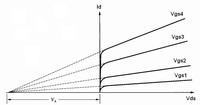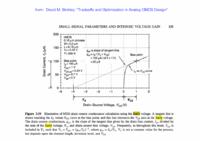AMSA84
Advanced Member level 2
- Joined
- Aug 24, 2010
- Messages
- 577
- Helped
- 8
- Reputation
- 16
- Reaction score
- 8
- Trophy points
- 1,298
- Location
- Iberian Peninsula
- Activity points
- 6,178
Hi guys,
I want to get the early voltage for the PMOS and NMOS transistor. I know that I have to get the slope of the Id vs Vds curves, but I don't know how to do it.
Can someone help me out here? I am using AMS DK 0.35um.
Kind regards.
I want to get the early voltage for the PMOS and NMOS transistor. I know that I have to get the slope of the Id vs Vds curves, but I don't know how to do it.
Can someone help me out here? I am using AMS DK 0.35um.
Kind regards.




